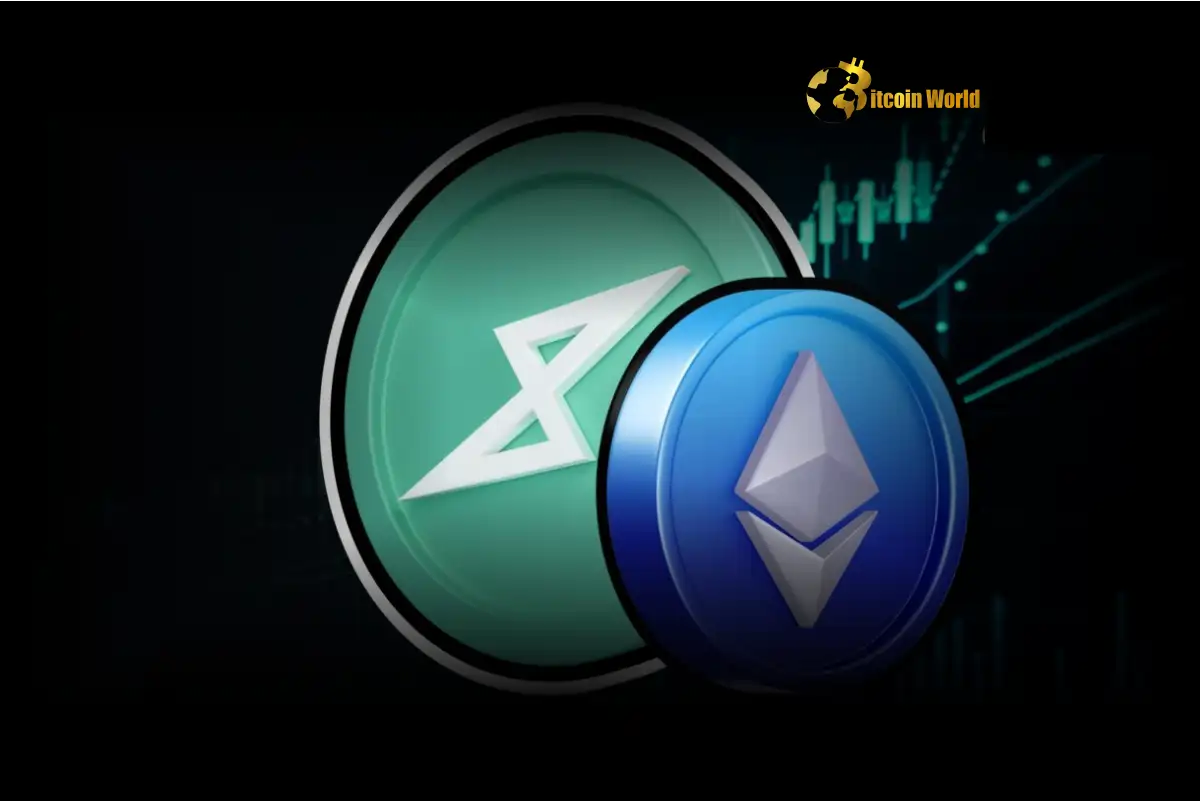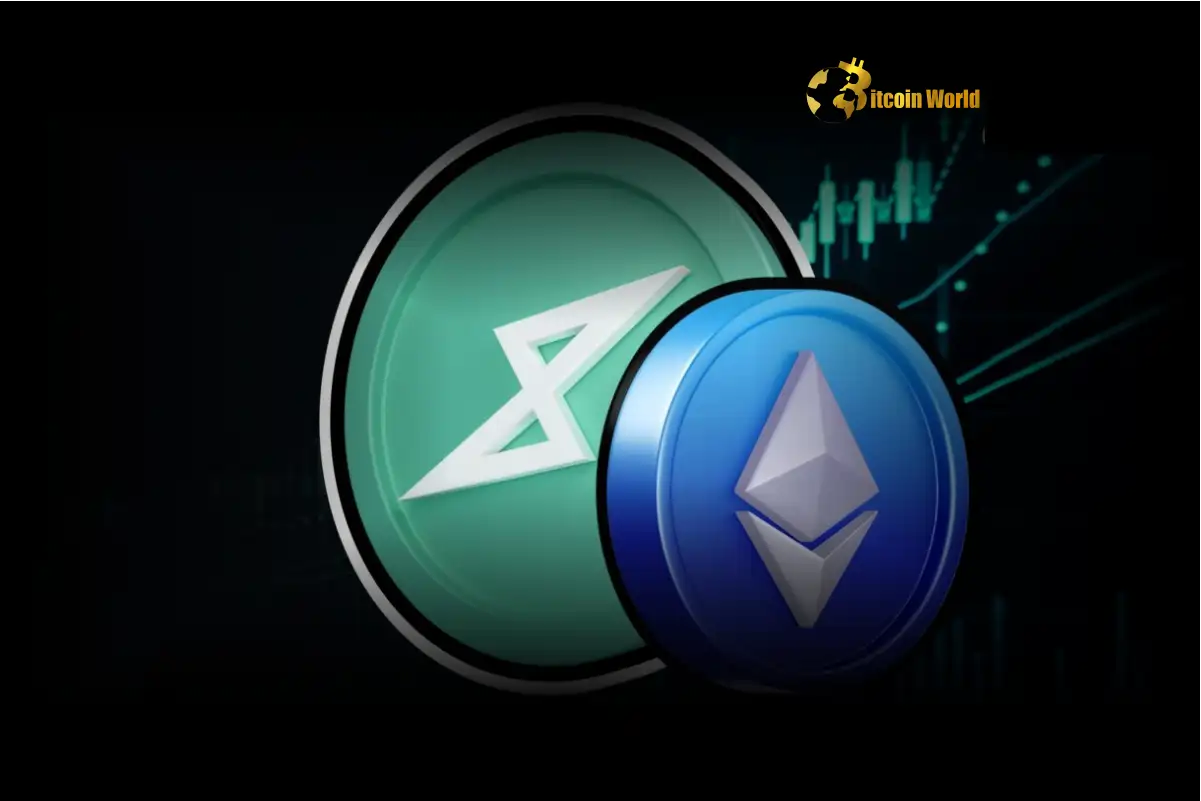BitcoinWorld

Urgent Warning: 8.6K ETH Sale Via THORChain Sparks Money Laundering Concerns
The world of cryptocurrency is dynamic, exciting, and constantly under the watchful eye of on-chain analysts. Recently, a significant ETH sale involving an anonymous address caught the attention of the crypto community, sparking serious concerns about potential money laundering crypto activities. This isn’t just any transaction; its characteristics, particularly its origin via THORChain, raise red flags reminiscent of past incidents involving illicit finance.
What Exactly Happened with This Large ETH Sale?
Let’s break down the specifics of the transaction that triggered this alert. According to prominent on-chain analyst @EmberCN on X, an anonymous wallet address executed a substantial sale approximately an hour before the report. The details are quite precise:
- Asset Sold: 8,698 ETH
- Asset Received: 22.12 million DAI
- Average Price: $2,543.4 per ETH
- Total Value: Approximately $22.12 million
- Source of Funds: Received shortly before the sale from THORChain
This rapid movement of a large amount of value, immediately following receipt from a cross-chain liquidity protocol like THORChain, is what initially drew scrutiny from on-chain analysis experts. While large transactions happen constantly in the crypto space, the context and source are crucial indicators.
Why is THORChain Connected to Illicit Finance Concerns?
THORChain is a decentralized cross-chain liquidity protocol. Its primary function is to allow users to swap assets across different blockchains (like swapping native BTC for native ETH) without needing a centralized exchange. This functionality is incredibly powerful and offers significant benefits for users seeking true cross-chain interoperability.
However, this very feature – the ability to move value seamlessly between disparate blockchains in a non-custodial manner – can also make it attractive for those looking to obscure the origin or destination of funds. Unlike centralized exchanges which typically require Know Your Customer (KYC) and Anti-Money Laundering (AML) checks, decentralized protocols operate differently. While transaction data on the blockchain is public, tracing the real-world identity behind an anonymous wallet address interacting with a decentralized protocol presents significant challenges for law enforcement and compliance teams.
It’s important to state that THORChain itself is a protocol designed for legitimate purposes. The concern arises when bad actors leverage its capabilities for illicit activities, just as traditional financial tools or even physical cash can be used for illegal ends. The protocol’s association with illicit finance stems from observations by analysts and authorities about transactions involving funds previously linked to hacks, scams, or other criminal enterprises passing through the network.
How Does On-Chain Analysis Help Uncover Suspicious Activity?
On-chain analysis is the process of examining publicly available data on a blockchain to gain insights into network activity, trends, and specific transactions. For analysts like EmberCN, it’s like being a financial detective in the digital realm. They use sophisticated tools and techniques to:
- Trace Transaction Flows: Follow the path of funds across different addresses and even different blockchains (especially with cross-chain tools).
- Identify Patterns: Recognize unusual transaction sizes, frequencies, or sequences that deviate from typical user behavior.
- Link Addresses: Use heuristics and cluster analysis to group addresses likely controlled by the same entity.
- Flag Known Illicit Addresses: Compare transaction participants against databases of addresses known to be associated with hacks, scams, ransomware, or sanctioned entities.
- Analyze Protocol Usage: Observe how specific decentralized protocols are being utilized, looking for patterns that might indicate layering or obfuscation techniques consistent with money laundering crypto.
In this specific case, the immediate sale of a large amount of ETH upon receiving it from THORChain, coupled with the protocol’s history, likely triggered automated alerts or manual investigation by the analyst. It’s the combination of the source, the size, and the subsequent action (selling into a stablecoin like DAI) that makes it suspicious from an on-chain analysis perspective.
Understanding Money Laundering Crypto Tactics
Money laundering is the process of concealing the origins of money obtained illegally. In the cryptocurrency world, the basic principles remain the same, but the methods adapt to the technology. The three main stages are:
- Placement: Introducing illicit funds into the financial system (e.g., converting criminal proceeds into crypto).
- Layering: Moving funds through complex transactions to obscure the audit trail (e.g., using mixers, tumblers, multiple wallets, cross-chain swaps like via THORChain, or converting between different cryptocurrencies).
- Integration: Returning the funds to the criminal from what appear to be legitimate sources (e.g., using crypto to buy assets, transferring to a clean bank account).
Using a cross-chain protocol like THORChain can be part of the ‘layering’ stage, making it harder to follow the money across different blockchain ecosystems. The subsequent sale into a stablecoin like DAI could be seen as preparing the funds for easier off-ramping into traditional finance or use in other markets, potentially moving towards the ‘integration’ stage. This specific ETH sale fits a pattern often observed in attempts to launder funds.
Learning from Past Incidents: The Bybit Example and Beyond
The analyst specifically mentioned the Bybit hack as a similar instance. While details publicly available about the Bybit incident’s exact money flow through THORChain might be limited, it highlights a pattern: large amounts of potentially stolen or illicit funds moving rapidly through decentralized cross-chain services to break the link with their origin.
Other examples of illicit finance leveraging decentralized tools include:
- Funds from ransomware attacks being sent through mixers or decentralized exchanges (DEXs).
- Proceeds from scams being swapped rapidly across various tokens and chains.
- Crypto obtained through darknet market sales being layered through multiple transactions before being cashed out.
Each time such an incident is detected through on-chain analysis, it provides valuable data points for identifying future suspicious patterns. The ETH sale in question adds to this growing body of knowledge about how decentralized protocols can be misused, even as they serve legitimate purposes for the vast majority of users.
What Actionable Insights Can We Gain From This Incident?
This event underscores several key points for everyone involved in the crypto ecosystem:
For Users:
- Be Aware: Understand that while crypto offers privacy features, complete anonymity is difficult, especially with sophisticated on-chain analysis tools.
- Choose Reputable Services: When using centralized services, ensure they have robust KYC/AML procedures.
- Understand Protocol Risks: Be aware that decentralized protocols, while powerful, can be exploited by bad actors, which can sometimes draw unwanted attention or regulatory scrutiny to the space as a whole.
For Protocols (like THORChain):
- Monitor Usage: While decentralized, insights from on-chain analysis can help identify patterns of misuse.
- Engage with Analysts/Regulators: Collaboration can help build a safer ecosystem and differentiate legitimate use from illicit finance.
For Regulators & Law Enforcement:
- Enhance Capabilities: Invest in on-chain analysis tools and expertise to effectively track illicit flows.
- Develop Targeted Regulations: Focus on points of interaction with the traditional financial system (on/off-ramps) while understanding the nuances of decentralized tech.
The challenge lies in preventing the misuse of technology without stifling innovation or infringing on legitimate user privacy. Events like this large ETH sale serve as reminders of the ongoing cat-and-mouse game between those seeking to exploit financial systems and those working to secure them.
Conclusion: Vigilance is Key in the Fight Against Illicit Finance
The recent ETH sale of over 8,600 ETH via THORChain, quickly converted to DAI, is a prime example of how on-chain analysis plays a critical role in monitoring the crypto landscape. While the transaction’s true nature is not definitively proven to be money laundering crypto without further investigation, its characteristics align with known patterns of illicit finance. This incident highlights the double-edged sword of powerful decentralized tools like THORChain – enabling legitimate cross-chain swaps for many, but also offering potential avenues for bad actors seeking to obscure their tracks.
As the crypto market matures, the sophistication of both legitimate use cases and illicit activities continues to evolve. The work of on-chain analysts remains indispensable in providing transparency and flagging suspicious behavior, contributing to the ongoing efforts to combat illicit finance within the decentralized world. Staying informed about such events and understanding the underlying mechanisms is crucial for anyone navigating the complex and ever-changing cryptocurrency space.
To learn more about the latest illicit finance trends in crypto, explore our article on key developments shaping on-chain analysis and regulatory responses.
This post Urgent Warning: 8.6K ETH Sale Via THORChain Sparks Money Laundering Concerns first appeared on BitcoinWorld and is written by Editorial Team





